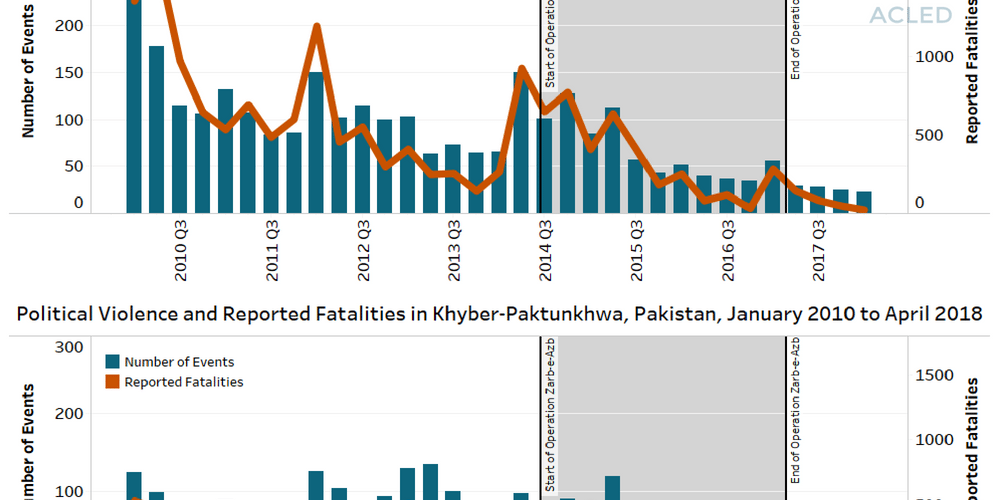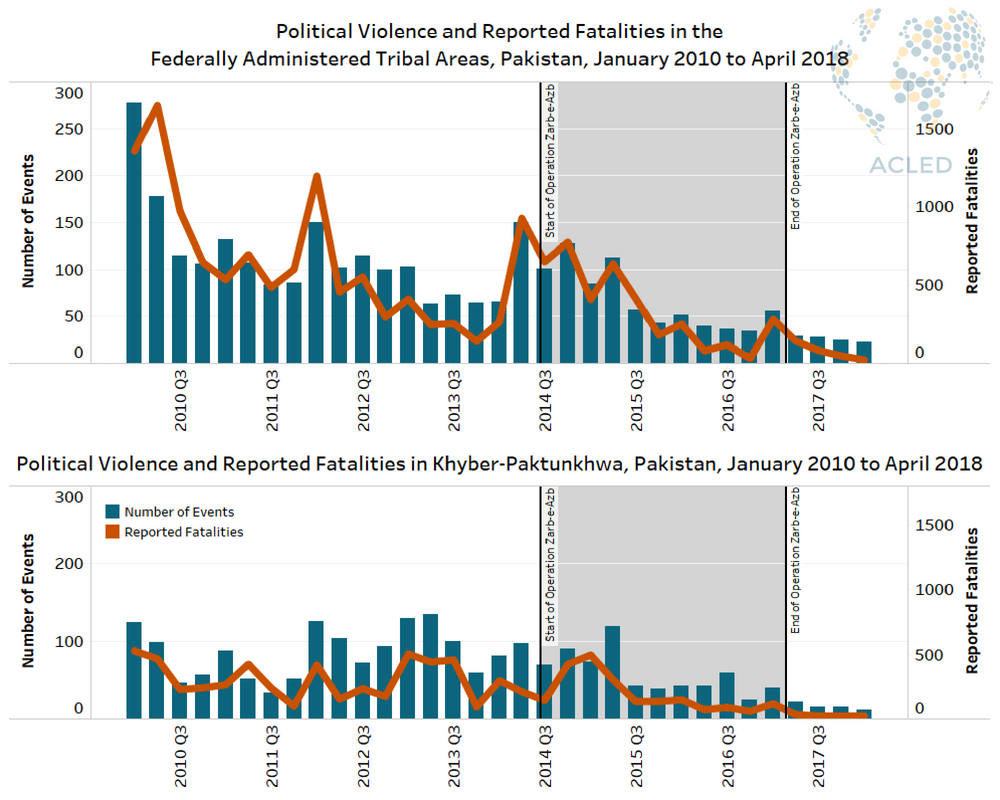On 27 May 2018, members of the Khyber Pakhtunkhwa (KP) Assembly voted overwhelmingly to approve the KP-FATA merger bill, which days earlier had been passed through both houses of Pakistan’s National Assembly (Dawn, 27 May 2018). This bill, officially the 31st Amendment to the Constitution of Pakistan, will merge the semi-autonomous Federally Administered Tribal Areas (FATA) with the neighbouring province of KP. The long-delayed bill aims to provide greater security and development to FATA. However, the presence of political factors — such as the upcoming general elections — have led some to question whether the bill was passed with due diligence, which could in turn trigger unrest and disorder.
Previously FATA had been governed through the Frontier Crimes Regulation (FCR), a colonial era system of governance retained following Pakistani independence which is largely opposed by the population of the area (Dawn, December 8, 2017). The FCR system and the autonomy it created for FATA resulted in the area being considered “lawless” (Al Jazeera, March 22, 2014), a perception bolstered by the fact that both local and international militant groups such as the Taliban, Al-Qaeda, and more recently the Islamic State have used the territory as a safe haven for their activities. This situation had motivated a number of attempts at reform of FATA’s governance since 1977, all of which failed to result in any substantial change (The Nation, 08 March 2017).
Likewise, the main aim of the 31st Amendment is to deal with these issues and to impose the same level of security and government control over FATA as currently exists in KP. This follows a significant decrease in both the number of events and in reported fatalities in the area following the end of the joint-forces Operation Zarb-e-Azb from June 2014 to Feb 2017 whose aim was to pacify the region (see graph below). This was also followed by a nationwide Operation Radd-ul-Fasaad, which picked up where Zarb-e-Azb left off and ended on 1 January 2018, following a major reduction in attacks across the country, particularly in urban areas which was a major objective of the operation. The merger is aimed at consolidating these gains in the face of new evidence that militant groups in the region may be regrouping and regaining strength following the end of these operations (Al Jazeera, 24 May 2018). Additionally, there is hope that securing the region may also improve the situation in Afghanistan, which has suffered from the ability of militant groups to use FATA as a safe haven for its fighters (TOLO News, 04 July 2017).
However, while the merger is generally seen as a positive step towards security, tribal groups within FATA continue to oppose the merger, claiming that their concerns were not properly addressed and that the amendment was forced through prematurely. This could lead to protests within the territory itself and attempts to delay the implementation of the merger until stakeholders opposing it are satisfied with the process (Dawn, 27 May 2018). With a general election scheduled for July 2018, there is also concern that the merger is being used as a means to gain political support from ethnic Pashtuns. Pashtun groups, such as the Pashtun Tahafuz Movement, have recently been holding protests against the military’s treatment of them under the existing FCR regulations in the tribal areas (The Diplomat, May 30 2018). The merger may win these potential voters over in the coming elections.
Regardless of the motives, celebrations occurred throughout FATA following the approval of the 31st Amendment after many decades of inaction. Despite opposition to the process, there is hope in the territory that security and standards of living will both be improved through the merger of FATA and KP (The Nation, April 17, 2018).
AnalysisAsiaCivilians At RiskElectionsPolitical StabilityRioting And ProtestsViolence Against Civilians






